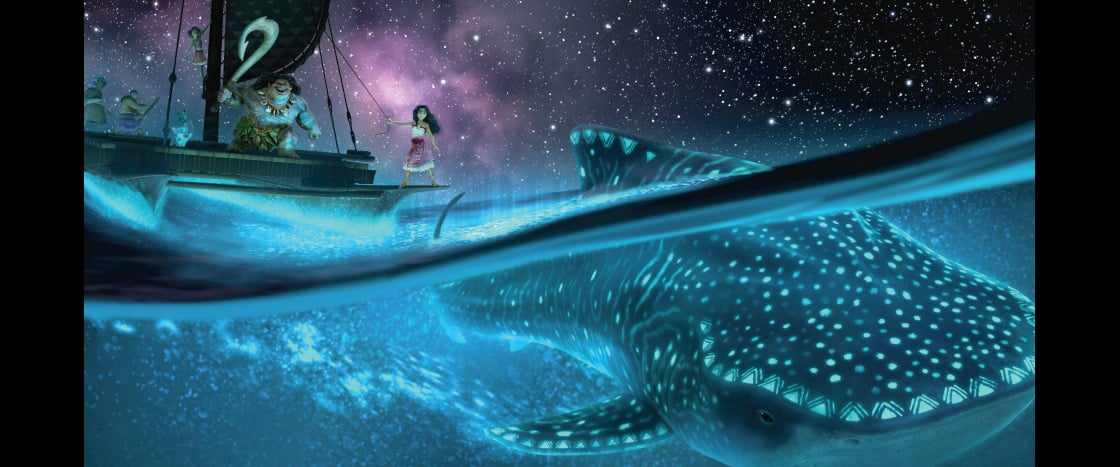© 2024 Disney. All Rights Reserved. (All Other Images)
Erin Ramos
When Erin Ramos was growing up, her favorite after-school activity was the same as that of many kids at the time: watching cartoons like Chip ’n Dale Rescue Rangers and DuckTales! She liked to draw but didn’t realize she could do it as a career. And more importantly, that Disney needed artists like her for their movies!
Now using art to make movies is exactly what Ramos does today for Walt Disney Animation Studios. She leads a team of 80 animators to make objects and environments move in films. This is called effects animation. The team uses technology to ensure the setting—from a falling leaf to a crashing wave—looks real.
She has worked on 20 films, including Moana and Encanto. Her newest movie, Moana 2, hit theaters November 27. Ramos recently spoke with SuperSTEM about her job as the effects supervisor for the movie.
Erin Ramos had a favorite after-school activity growing up. It was the same as that of many kids at the time. It was watching cartoons! She liked Chip ’n Dale Rescue Rangers and DuckTales. She liked to draw. But she didn’t know it could be a job. And she didn’t know Disney needed artists like her for their movies!
Using art to make movies is exactly what Ramos does today. She works for Walt Disney Animation Studios. She leads a team of 80 animators. They make objects and surroundings move in films. This includes a falling leaf or crashing ocean waves. It’s called effects animation. The team uses technology to make the setting look real.
Ramos has worked on 20 films. They include Moana and Encanto. Her newest movie is Moana 2. It hit theaters November 27. Ramos recently spoke with SuperSTEM about her job. She explains what it’s like to be an effects supervisor.

